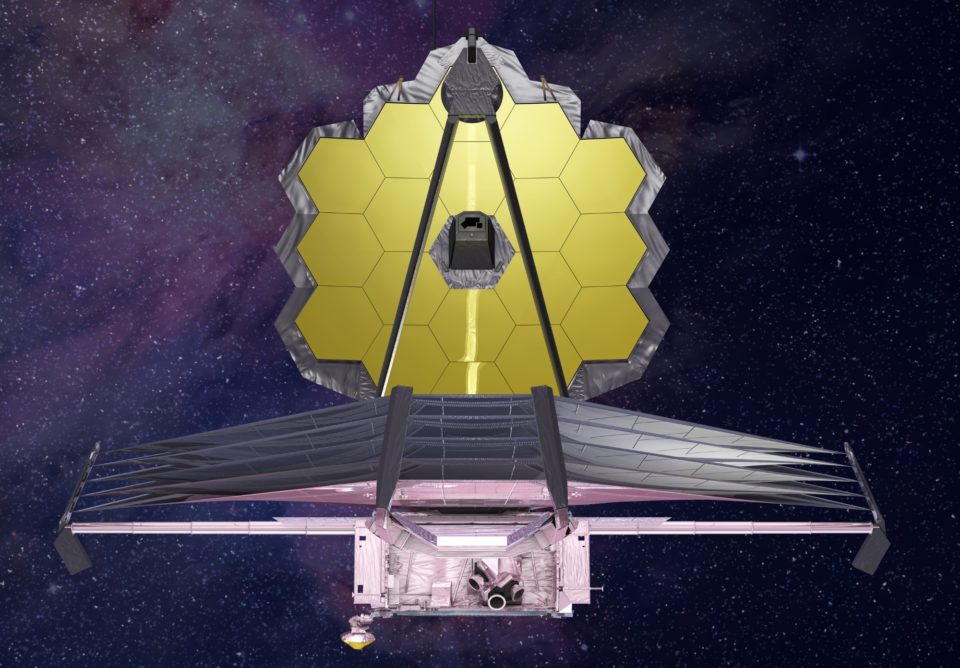The James Webb Space Telescope is one of NASA and the space community in general’s most exciting missions in the past decade, and the enormous observation platform’s first image, of distant galaxies actually behind our neighboring galaxies, which was just revealed to the public hosted on a stream by none other than President Biden and Vice President Kamala Harris.
“If you held a grain of sand on the tip of your finger at arms length, that is the part of the universe that you’re seeing, just one little bacon of the universe,” said NASA administrator Bill Nelson. “And what you’re seeing there are galaxies, you’re seeing galaxies that are shining around other galaxies whose light has been bent.”
The image has been named “Webb’s First Deep Field.” This target was called SMACS 0723 in materials circulated before the image went live; as NASA described the technique, you use a “nearby” (but still impossibly distant) galaxy to “magnify and distort the light of objects behind them, permitting a deep field view into both the extremely distant and intrinsically faint galaxy populations.”
That likely explains the interesting distortions visible among the many galaxies on view here — but we’ll know more soon. For now check out the description here. It’s “the deepest and sharpest infrared image of the distant universe to date.”
Tomorrow is the official big media day for the Webb, or JWST as it is often abbreviated, at which several more images will be shown off and all kinds of technical and astronomical information related. But it’s understandable that such a long-awaited (and much delayed) event would get the Presidential treatment.
Image Credits: Northrup Grumman
“It is an example of how a scientific endeavor of the international rules and norms that govern cooperation in space; this telescope is one of humanity’s greatest engineering achievements,” said Harris.
The bus-sized Webb was launched on Christmas Day of 2021, and after working its way to its position a million miles out from Earth (“First of all, that blows my mind,” said the President), has been laboriously powering up and testing its many components and processes. The image we’re seeing today is the first “real” image in that it’s the first one taken as a fully operational telescope — but we’ve seen plenty others of inferior quality as the team shared its progress getting the Webb up and running. (And briefly panicked over an unexpected micro-meteoroid hit — but aren’t they all?)
“Each of Webb’s four scientific instruments has multiple modes of operation, utilizing customized lenses, filters, prisms, and specialized machinery that needed to be individually tested, calibrated, and ultimately verified in their operational configuration in space before beginning to capture precise scientific observations of the universe,” read a NASA news release announcing the completion of the process. So there 17 different modes in which it operates that had to be tested.
Although the image released today is in color, the Webb actually detects infrared light, which means there is a level of interpretation and abstraction to these images that we’ll get into tomorrow as the scientists explain it in detail (don’t worry, it isn’t “artist’s impression” or anything like that). The most famous space telescope of all, the Hubble, took pictures in the same wavelengths that humans see in, which simplified the image-making process but also limited it in other ways.
As the team has explained over the years of JWST’s development, using infrared (and lots of it) allows the telescope to see totally different stellar objects and substances, and also detect some that would be blocked by dust clouds and other cosmic obstacles. It’ll be especially good at observing exoplanets and their atmospheres, partly due to a setup that lets it block out a star’s relatively bright glare and focus on what’s around it.
Here are the other four first targets for the Webb, which we’ll see tomorrow:
- Carina Nebula, one of the largest and brightest nebulae in the sky. The Hubble actually imaged this a while back and it looks amazing.
- WASP-96 b, a gas giant planet about 1,150 light years from Earth.
- Southern Ring or Eight-Burst Nebula, an expanding cloud of gas surrounding a dying star.
- Stephan’s Quintet, the first compact galaxy group ever discovered, back in 1877.
We’ll have those images tomorrow, along with all kinds of interesting commentary from the researchers behind the Webb. This is just the beginning of a new era of space observation for NASA and space watchers around the globe — like the Hubble before it, expect JWST to be a constant presence in the science world for decades to come.
